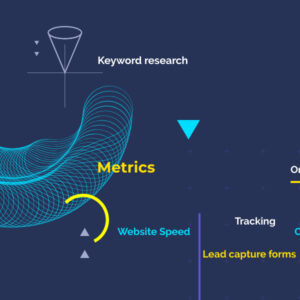It’s not easy to keep track of every moving piece of your business, especially when you’re also the CEO, CFO, and HR manager. Organizing your business activities into projects can help you streamline your business operations. Project management is a discipline that has a set of principles and techniques that can help you achieve it. It’s also one of the most effective ways to improve efficiency and reduce waste in your company. If you’re feeling a bit frazzled by all the details or simply want to ensure everything is running smoothly at all times, it’s time to implement project management best practices. Project management principles aren’t just for giant corporations with massive budgets; small businesses can reap the benefits of an organized workflow as well. The trick is knowing where to start. Read on for our project management tips for business owners:
Meet with your team to create a workflow foundation
Before you can start project management, you need a workflow foundation. Meet with your team to determine which activities you need to organize and manage as projects. These activities can be the one needed to complete a specific client work or to reach one of your business goals. Pick two or three projects to start with, and focus on streamlining these first. Ideally, you and your team will be able to identify which processes are causing bottlenecks or slowing down the completion of the project. Visit several project management websites to help you get started. You’ll find tons of advice and best practices that apply specifically to small businesses. As you read through each article, think about how you can apply the concepts to your company. Once you’ve decided on which projects to focus on first, you can start implementing project management best practices. You can also contact a company that specializes in project management for small businesses to help you get started.
Establish transparency with a project tracking tool
The key to success when managing projects is having a clear, transparent view of the entire workflow. This means that everyone involved in the project understands which tasks they need to complete and when they need to be done by. It also means that you and your team can see where there are any potential bottlenecks, roadblocks, or other issues that could delay the project further. You can help increase transparency with a project tracking tool. This type of tool allows you and your team to see the status of every project at a glance. Most project tracking tools let you add milestones, assign tasks to team members, set due dates, and attach files to every project. A few examples of project tracking tools are Asana, Trello, and Wrike. These platforms offer free or paid plans, depending on your business needs.
Set clear goals for each project
As you’re mapping out your workflow, you’ll want to set goals for each project. Goals help you determine which projects you should be focusing on and which ones can be put on the back burner. They also help you determine the success rate for each project. This way, you can adjust or end a project if it’s not meeting expectations or if it’s taking too long. While you can track the progress of each project with a project tracking tool, you can also write goals out on paper. Post them next to the project they apply to so you can reference them whenever you need to. If you prefer to keep your goals digital, you can add them to your project tracking tool.
Determine key milestones and tasks
Key milestones are the major waypoints in your project. They’re often the dates you’ve committed to certain deliverables or end results. For example, when your team completes the initial product design, or when you need to submit a proposal to a client by the end of the week. Your milestones will depend on the type of business you run. If you run a creative agency, for example, key milestones might be when you need to narrow down the client list, write a creative brief for the project, and create a mockup for the client. If you manage a restaurant, your milestones might be hiring and training your new employees, designing your food menu, or creating an overall floor plan for your establishment. Once you’ve determined your key milestones, you can start listing out your tasks.
Track the time spent on each task
One of the most effective ways to increase transparency is by tracking the time spent on each task. This helps you see at a glance when your team members are overworking or when they have extra time in their schedules. It also allows you to see if the project is on schedule or behind. If you’re using a project tracking tool, you can set up a timesheet feature to track the time spent on activities. Some project tracking tools also integrate with your team members’ time-tracker apps, like Harvest or Toggl. If you don’t have a project tracking tool, you can create a spreadsheet to track time spent on each task.
Implement feedback loops
Feedback loops are crucial for business growth. They help you identify problems in your workflow and find ways to improve your company. It’s important to track both positive and negative feedback from clients and team members. This way, you can pinpoint issues in your workflow and implement solutions. If you’re getting more negative feedback than positive, it’s a good indicator that you’re having issues in your workflow. To implement feedback loops, you can add a “feedback” section to your project tracking tool. You can also add a “comment” section to your team members’ task boards. This way, everyone has a central hub for providing feedback.
Conclusion
Project management can seem like a challenge at first, but it doesn’t have to be that way. You just need to know the basics of project management and how you can apply them in your business. More than just making sure that a project is completed on time and within budget, Project Management will help you ensure that all the different moving parts of a project fit together in the best way possible to meet the business goals.
Nyamga Project Management Basics Business Owners







